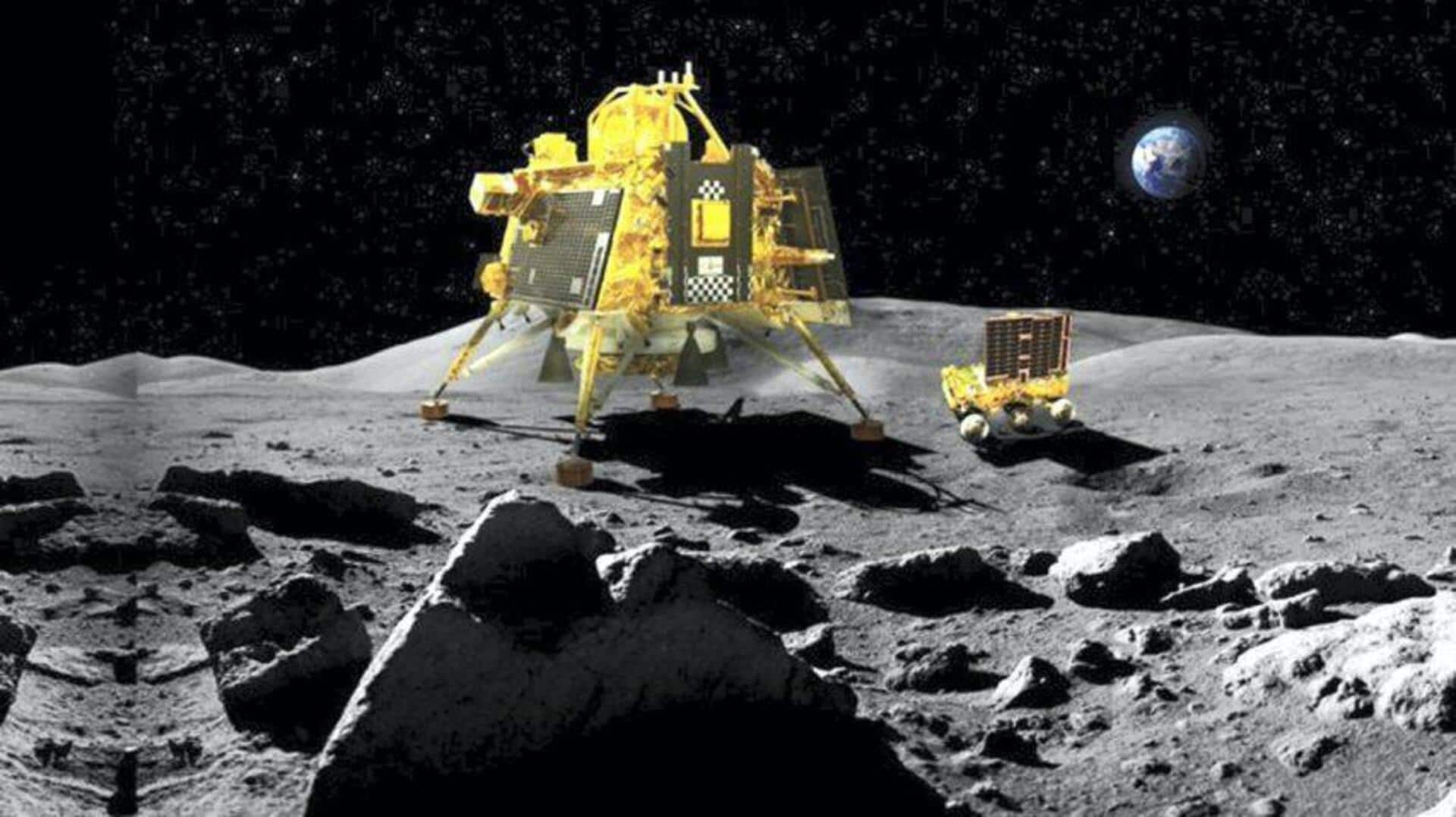
Chandrayaan-3 makes breakthrough discovery on the lunar surface
What's the story
India's Chandrayaan-3 mission has made a significant discovery, just before its first anniversary. The Pragyan rover has found that the regolith or lunar soil around the landing site has a uniform elemental composition, mainly composed of ferroan anorthosite rock. This finding supports the theory of an ancient magma ocean on the Moon. The data was obtained from measurements taken by the Alpha Particular X-Ray Spectrometer (APXS), one of the payloads of the Pragyan rover.
Information
Indian scientists behind this breakthrough discovery
The discovery was made by a team of Indian scientists led by Santosh Vadawale from the Physical Research Laboratory (PRL) in Ahmedabad, under the Department of Space.
Lunar exploration
APXS reveals evidence of ancient magma ocean
The APXS, built by PRL, aims to measure the elemental composition of lunar soil at locations where the rover stopped. The team also discovered evidence of an ancient magma ocean near the lunar south pole. This region was previously unexplored by humans. The scientists stated that their results from Chandrayaan-3 data strengthened the lunar magma ocean hypothesis, suggesting that the Moon's mantle formed as heavier materials sank inward while lighter rocks floated to create an outer crust.
LMO hypothesis
Lunar magma ocean hypothesis, explained
The lunar magma ocean (LMO) hypothesis proposes that the Moon was completely an ocean of magma when it formed. As the magma cooled, heavier minerals like olivine and pyroxene sank to form the inner layers of the Moon, while lighter mineral plagioclase floated to form its outer crust. The prominent occurrence of ferroan anorthosite (FAN) in soil observed by APXS further confirmed this theory.
Geological insights
Pragyan rover's findings support lunar magma ocean theory
The presence of additional magnesium-rich materials suggests that the outer crustal material has mixed with material from the Moon's deeper layers to form soil near the Chandrayaan-3 landing site. The chemical makeup of regolith near the lunar south pole resembles that of soil samples from equatorial and mid-latitude areas, further supporting this theory. Pragyan also provided new details into local geology, revealing a relatively smooth terrain within 50 meters around the landing site with no visible craters or boulders.
Lunar history
APXS's measurements provide insights into Moon's evolutionary history
The analysis from 23 measurements at different locations within 50 meters of the Chandrayaan-3's landing site showed that lunar regolith is uniform in elemental composition. This can serve as a "ground truth" for future remote sensing missions. The new measurements by APXS in this never-before-explored region of the Moon suggests that lunar soil is a mixture of two types of rocks where some part of the material is excavated from deeper layers, providing direct insight into the Moon's evolutionary history.